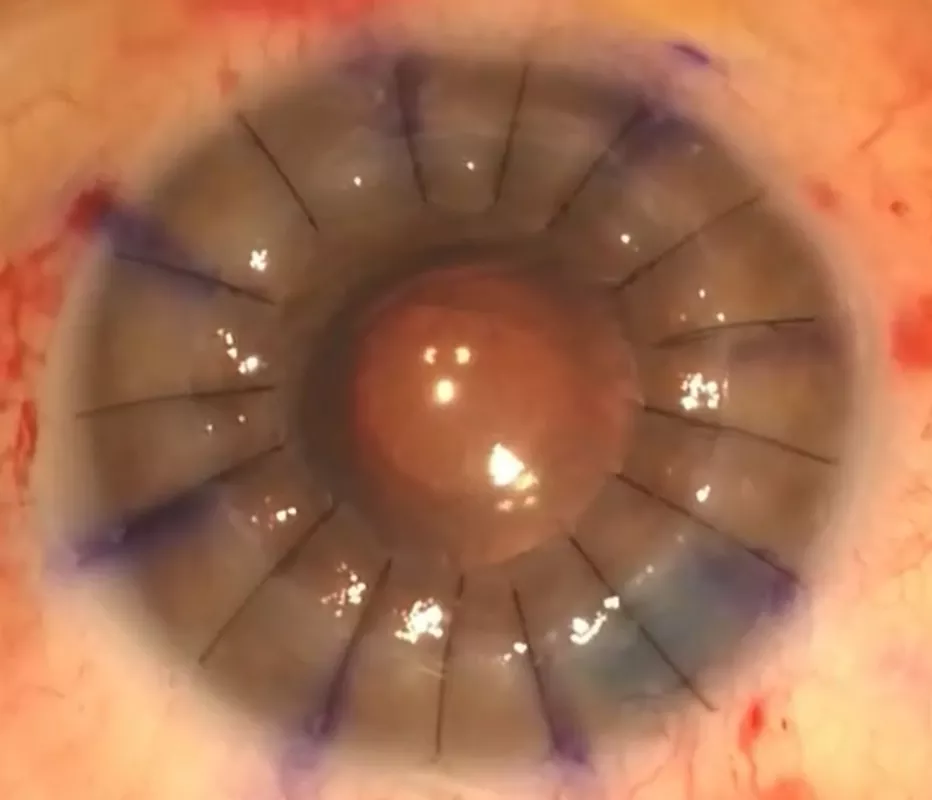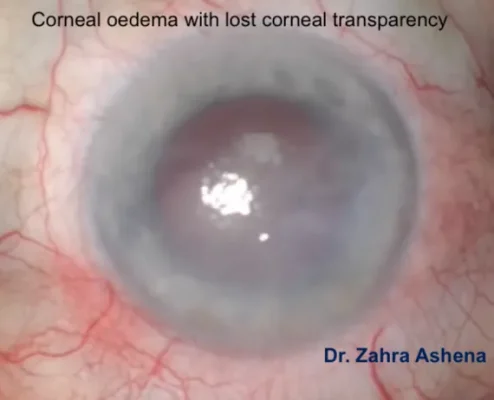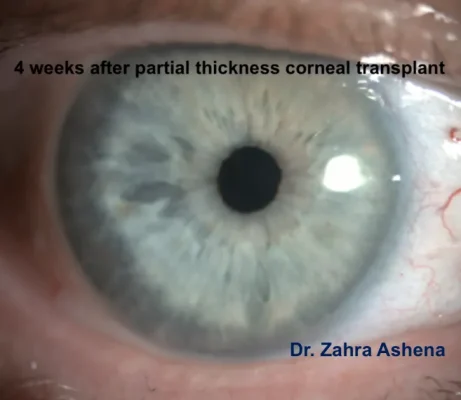
1. Penetrating Keratoplasty (PK): This is a full-thickness corneal graft and is indicated when the pathology affects the entire cornea, such as in cases of severe corneal scarring following infectious keratitis. The donor corneal tissue is secured to the host tissue with 16 stitches.

2. Deep Anterior Lamellar Keratoplasty (DALK): This type of transplant is performed when the pathology involves the superficial to deep layers of the cornea but spares the innermost layer. Since the inner layer remains intact, the risk of rejection is lower, which generally leads to a longer survival of the transplant.
3. Endothelial Keratoplasty: This procedure has two main subtypes: Descemet Membrane Endothelial Keratoplasty (DMEK) and Descemet Stripping Automated Endothelial Keratoplasty (DSAEK). These transplants are typically offered for conditions like Fuchs endothelial dystrophy or corneal decompensation. They allow for much faster visual recovery and a significantly lower risk of rejection compared to other forms of transplantation.




